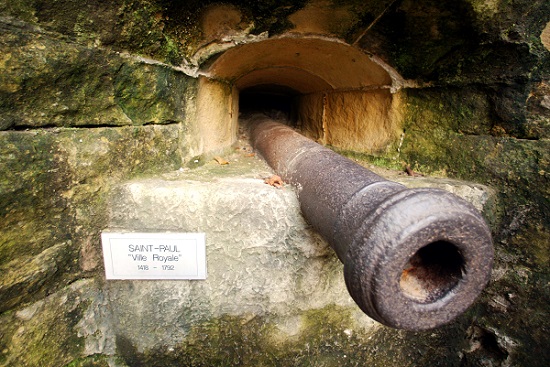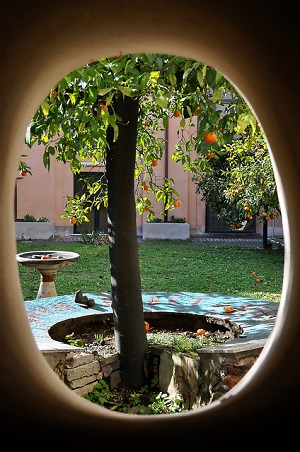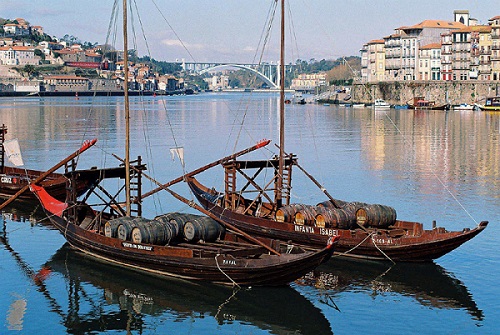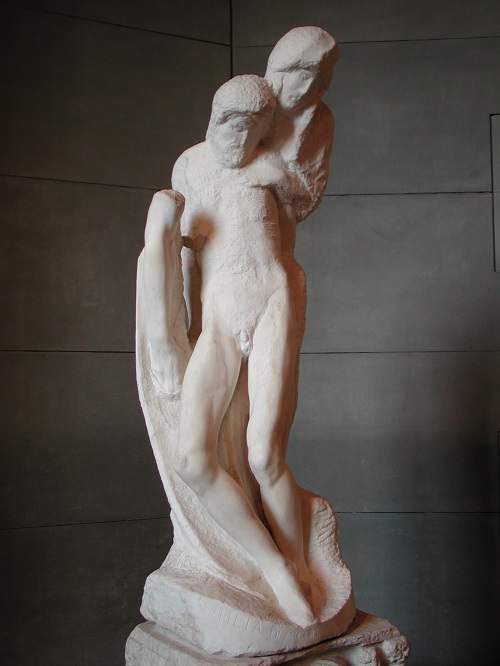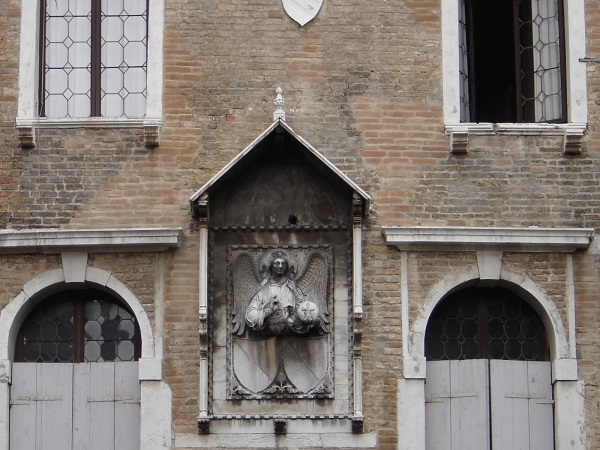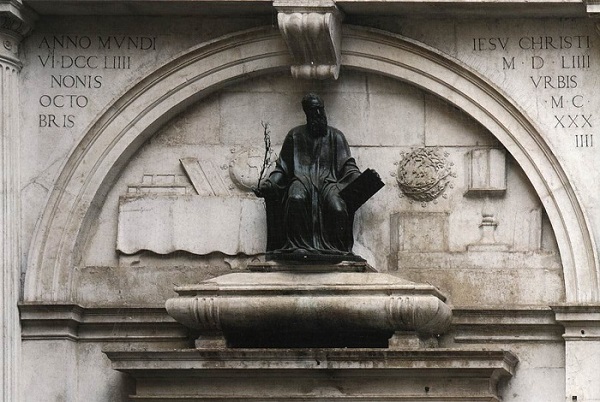
On the façade of the Church of San Giuliano, San Marco, you will find a statue by Alessandro Vittoria of Tommaso Rangone, a rather curious but interesting Renaissance figure.
Tommaso Rangone was born in 18 August 1493, in Ravenna and died in 1577, aged 84. He was a scholar and a scientist but his reputation is said to have suffered somewhat because of his penchant for self-celebration. Indeed, the statue, pictured above of which you will read more about shortly, came only after he had failed in his attempts to get a statue of himself erected in the façades of the church of San Geminiano [where he was a procurator] and of the Scuola Grande di San Marco [where he was the Guardian Grande]. He also had himself included in the paintings Tintoretto was commissioned to produce for the Scuola Grande, but the paintings were rejected by the monks who were sick of his pushiness. Tintoretto even suggested that he paint over the images of Rangone so as to have the paintings accepted!
Rangone was known to constantly boast about his vast knowledge in astrology, medicine and languages and he also claimed that his own personal library was one of the Seven Wonders of the World!!
Rangone had made his fortune through the alleged discovery of a ‘cure’ for syphilis, though he denied that the disease was transmitted solely via sex. According to his theory, the disease was a result of natural causes and his remedy came from the recently-discovered New World, where the natives had long been expert in finding natural remedies for different diseases.
He also founded a university college in Padua, which provided free accommodation for 32 students who studied astronomy, Hebrew, Chaldee, Syriac, Persian and the interpretation of the Holy Scripture. Taking his lead from the Bible, specifically Genesis 6:3 – “…My Spirit will not contend with man forever, for he is mortal: his days will be a hundred and twenty years.” – he wrote a treatise entitled Sul Come condurre la vita fine a 120 anni, mentioning all the various ancient philosophers and biblical patriarchs who had lived up to (or beyond) that age. His book was then presented to doges and popes, and Rangone even had a compilation of extracts made for the benefit of the populace of Venice. His recipe for long life involved a healthy lifestyle, minimal consumption of medicines, rigorous self-discipline and frequent prayer to one’s guardian angel and the stars.
His penchant for self-promotion even extended to his plans for his funeral. He stipulated that his body was to be carried through the city on its way to San Giuliano, preceded by a long file of people bearing open books. Each one of those was to illustrate a specific subject: Ravenna (his place of birth), the bird of paradise, a pair of ravens (symbols of long life), the peony (the most celebrated and ancient of medicinal plants), the movement of heavenly orbs and constellations, and so on….
So to return to the statue. Rangone is seen seated on a sarcophagus and wearing a professional gown, as if in the act of imparting to the world his vast knowledge, The hemispherical space within which he is depicted is a symbol of the Heavens above the Earth. Hence there is a conscious reference to the hermetic theories that enjoyed such a vogue in the Renaissance. The globe to the right of Rangone is shown inclined at 44° 30″ (the latitude of Venice) and is engraved with the constellations as they were on the date of his birth (18 August 1493; his zodiac sign – Leo – is shown at the centre of the heavenly sphere). In combination with the cube on which it rests, this celestial globe symbolizes motion and stability, Heaven and Earth, and the finite and the infinite.
To the left, a terrestrial globe is shown on a table together with some books. Inclined in the opposite direction to the celestial globe, it shows at its centre the Atlantic Ocean between Europe and South America. Between these two globes, Tommaso is shown seated and holding a book in his left hand within which the word DEUS and the abbreviation HIQ (Hinc Illincque) can be read, which might be translated as meaning “on one side and the other” or “on each side”. The message is that God can be contemplated on Earth as in Heaven.
In his right hand, Rangone holds the plant discovered in South America, to which he would give the name “Indian wood” or “holy wood”. The divine presence thus manifests itself on both sides of the Atlantic, just as it does in both the celestial and terrestrial spheres.
There are three inscriptions on the façade. The one in Latin gives biographical and juridical information, the one in Greek praises his cultural achievements, and the third, in Hebrew, recalls the possibility of achieving on Earth the divine project of living to the age of 120.
So the next time you are in Venice, take some time to see this statue of a man which a serious dose of self-worth!!!
(Adapted in part from Secret Venice by Thomas Jonglez Paola Zoffoli)


